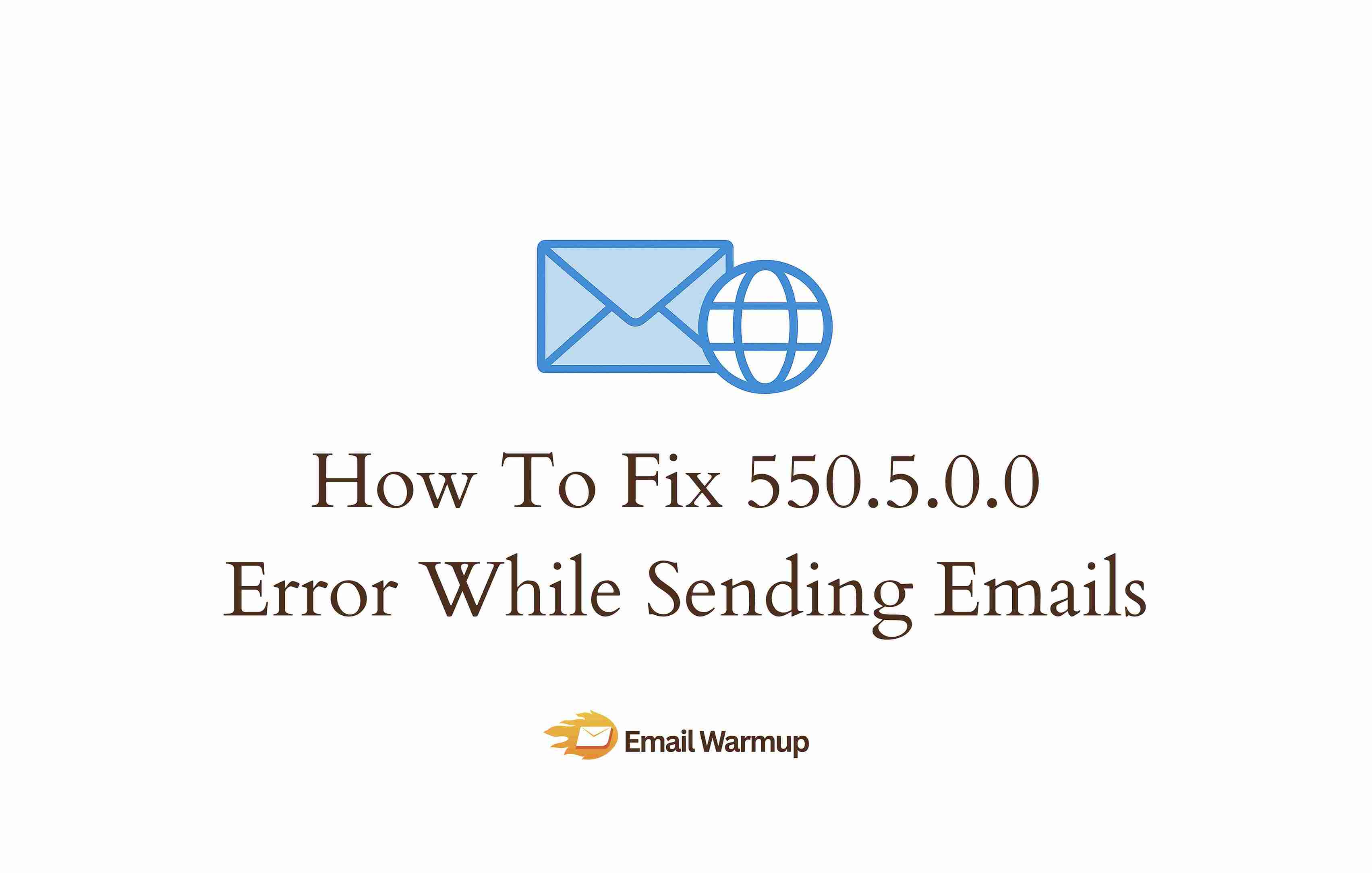
The 550 5.0.0 error means a mail server permanently rejected your email, and it won’t reach the recipient’s mailbox. The rejection can happen at your mail server, the recipient’s spam filter, or any server in between. This error appears as Status: 5.0.0, with a message like “550 permanent failure for one or more recipients (blocked)” or “Mail rejected (possible SPAM).”
Step 1: Find out who’s blocking your emails
Check the bounce message for the “Reporting-MTA” field. This shows which server generated the bounce (usually the one that saw the rejection).
What to look for:
| If the MTA contains | The block is from |
| Your hosting provider’s domain | Your own email service |
| antispam.mailspamprotection.com | Your hosting provider’s spam filter |
| barracudanetworks.com | Barracuda filter (often recipient-side) |
| Recipient’s domain | Recipient’s mail server |
If your own hosting provider blocked the email, contact their support to review their spam policies.
Step 2: Fix your server’s identity
Servers with invalid names often get rejected or heavily penalized. If your Exchange server ends in .local (like mail.company.local), many mail servers will reject or downgrade your reputation because .local isn’t valid on the internet.
Fix this by:
Changing your server’s FQDN to a valid, resolvable hostname (ideally aligned with your MX and reverse DNS, like mail.yourdomain.com)
Running these commands after the change:
- ipconfig /flushdns
- ipconfig /registerdns
Your server needs to announce itself with a real, internet-facing domain name that resolves properly. Use our free email deliverability test to verify your setup is working.
Step 3: Test what’s triggering the rejection
Attachments can trigger filters (executables and macro-enabled files are high-risk, but even PDFs sometimes get flagged). Try sending without attachments first.
Testing sequence:
- Send a plain text email with no attachment, no signature, no links
- If that works, add your signature and try again
- If that works, try the attachment separately
The email spam checker browser extension shows your deliverability score in real-time while composing, so you can catch problems before hitting send.
Step 4: Route through your ISP (temporary fix)
If the recipient’s spam filter is blocking your server’s IP (even after fixing everything), set up an SMTP connector to route mail through your ISP’s mail server.
Your ISP must allow this, and it won’t work if they use residential IP ranges that recipients distrust.
This helps because large ISPs have established infrastructure with better baseline reputation than a new or flagged IP address.
Keep running email warmup to build sender reputation over time. Warm-up helps, but list quality and engagement matter more.
Prevent future 550 errors
Prevention is better than cure:
| Action | How it helps |
| Set up SPF, DKIM, and DMARC | Proves domain control and improves trust (doesn’t guarantee delivery) |
| Warm up new domains for 14+ days | ESPs need time to trust you |
| Clean your email list regularly | Bounces destroy the sender’s reputation |
| Avoid URL shorteners in cold emails | High-risk and heavily abused by spammers |
Even with proper authentication, aggressive spam filters can still block you (recipients set their own policies). That’s normal.
Still getting blocked after trying everything?
Some spam filter configurations are impossible to crack on their own (especially enterprise Barracuda setups). If you’ve tried these fixes and still can’t get through, don’t waste more time guessing.
Book a free consultation with one of our email deliverability experts.
We’ll diagnose the exact block, handle the technical fixes (SPF/DKIM/DMARC setup, blacklist removal, segmentation), and get you delivering to the inbox.
Frequently asked questions
Here are commonly asked questions about this error:
Authentication proves you’re legitimate, but doesn’t guarantee delivery. Reputation, content, and the recipient’s filter strictness all matter.
The company likely uses stricter email spam filtering. Try the SMTP connector workaround in Step 4?
14-30 days of consistent email warmup for new domains. If you’re already flagged, removal from blacklists takes 1-7 days after the root cause is fixed.
Bad idea. The domain’s reputation follows you, and starting fresh without a warmup will trigger the same blocks more quickly.
Start with Step 2 (server configuration). Generic errors can mask many types of policy blocks, such as spam filtering, rate limits, or authentication failures.
